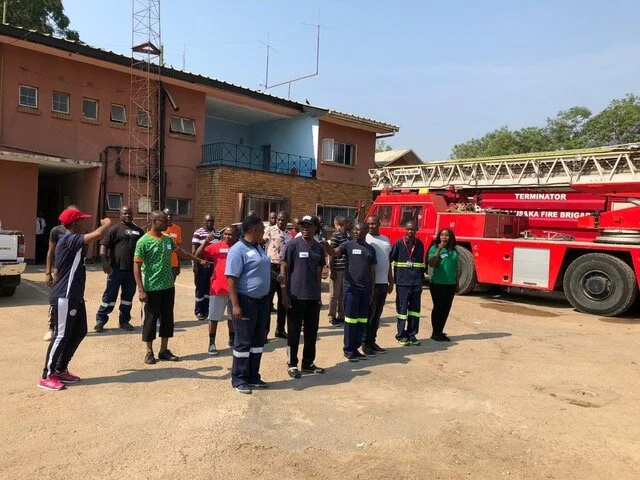By: Mark van der Feyst
Rapid fire developments (RFD) are when we have a sudden and immediate change in the fire environment. At one moment we have thick, dark, black smoke with intense heat and the next second, we have a ball of fire from floor to ceiling – this is an RFD.
Every fire department will face RFD’s no matter what type of structure they are dealing with – if it has four walls and a roof, then there is the space and environment for an RFD. The different types of RFD’s are going to be flashover, back draft, and smoke explosions. The three are different in how they develop and react but are the same with the outcomes – deadly outcomes. RFD’s produce RIP’s (Rest In Peace) for the fire service.
Of the three RFD’s, flashover is going to be the one that will occur the majority of time at any and every structure fire. So, what is a flashover? A flashover is the simultaneous ignition of unburned fire gases within a room. It occurs when hot gases rise to the ceiling and spread out across the walls. These hot gases are what we call black smoke – unburned particles of combustion. As it spreads out across the ceiling and the walls, it starts to heat up the items found within the room such as the paint on the walls, the furnishings, clothing, mattress, flooring material, etc. – until they all reach their ignition temperature. Once they are all at their ignition temperature, an RFD occurs.
Before a flashover occurs, there are warning signs that are presented or given off by the fire to indicate that flashover is impending. These warning signs are presented to us both visibly and tactically – our eyes can see and our bodies can feel them.
· Heat buildup – based upon the temperature range of flashover, there will be a period of time when excessive heat buildup will occur. This heat buildup will descend down towards the lower levels of the room pushing the firefighter down to the floor. This will be the result of radiant heat being produced by the unburnt particles of combustion spreading out from ceiling to walls and then down to the floor area. When this quick increase in heat occurs, and it is an intensive heat; flashover is impending.
· Roll over – this is a visible indicator as it reveals itself in the smoke. A roll over or flame over is when small gaps open up in the smoke layer allowing air to mix with the unburned particles of combustion and ignite. Small flames can be seen in the midst of the smoke for momentary periods of time and then disappear. When this occurs, this is a warning sign that flashover is coming.
· Thick dark smoke – this is also a visible indicator as it will present itself outside the building as well as inside the building. On the inside, you will not see anything except total blackness: but on the outside, you will notice this. Whenever you have thick dark, acrid black smoke pushing out from a structure under high pressure and with high velocity, flashover is impending. This is an outside warning of what is waiting for us on the inside.
What has been described above are the common signs that we will see and feel at every fire – it is important for the firefighter to learn and understand the basic concept of what a flashover is before being able to learn the actions that can be used to aggressively cool the fire or escape the situation if warranted.
About the Author:
Mark van der Feyst is a 25 year veteran of the fire service and is currently the Senior Battalion Chief at the Six Nations Fire & Emergency Services in Canada and a part time firefighter with the Fort Gratiot Fire Department in Michigan. He has worked in both the USA and Canada for various fire departments and holds a Masters of Science degree in Safety, Security & Emergency Management from Eastern Kentucky University.







